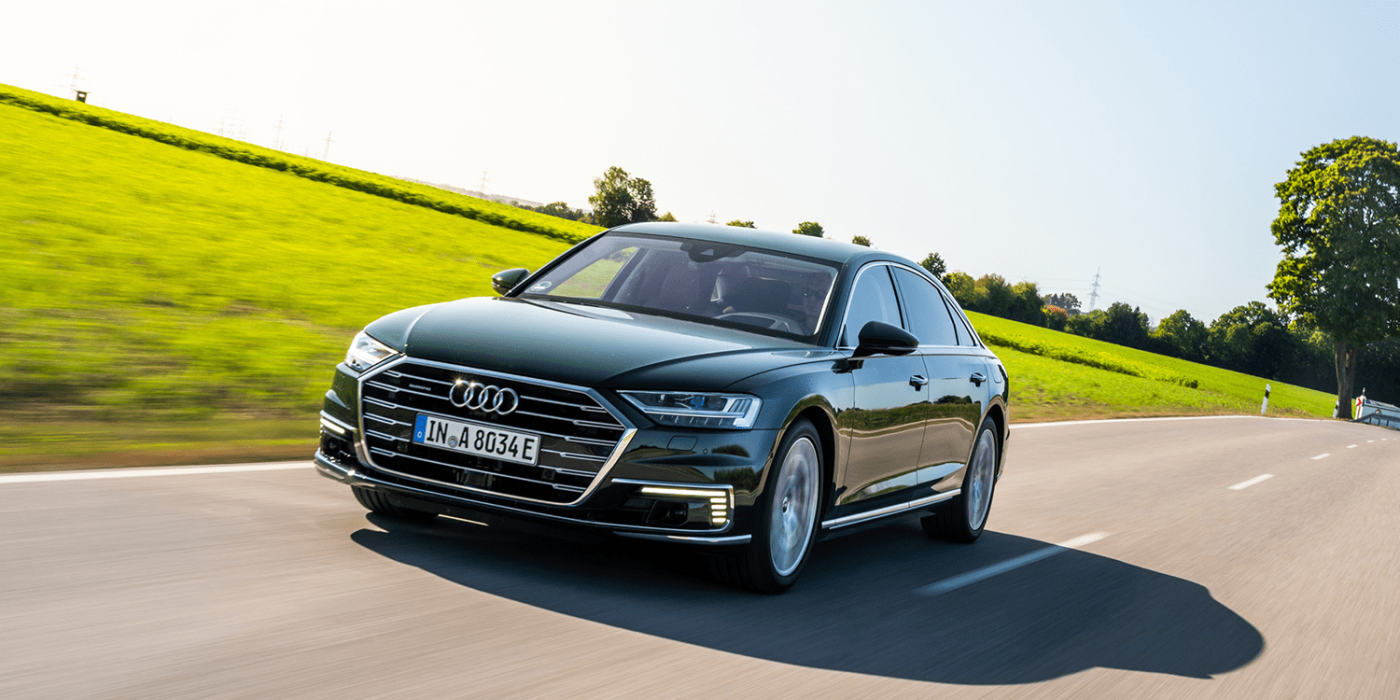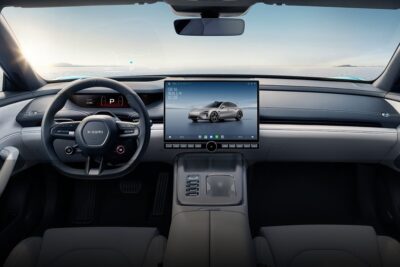Audi to release plug-in hybrid A8
Audi is equipping its luxury A8 series with a plug-in hybrid drive. The A8 L 60 TFSI e quattro offers 330 kW system power and a purely electric WLTP range of up to 46 kilometres. As with the A7 PHEV, Audi intends to compensate for the shorter range by making greater use of the EV mode.
Audi has opted for a different drive system than that used in the A7 Sportback‘s plug-in offshoot introduced a few weeks ago. While the latter has to make do with a 2.0-litre four-cylinder petrol engine (system output: 270 kW), Audi combines a 3.0-litre V6 petrol engine with the electric drive in the A8. The combustion engine (Euro 6d-temp) has an output of 250 kW, and the electric motor contributes up to 100 kW.
Audi estimates the combined consumption to be 2.5 to 2.7 litres, with electricity consumption at 20.9 to 21.2 kWh/100 km. However, these are not WLTP values. “We are currently still required by law to state the NEDC figures. In the case of new vehicles which have been type-approved according to the WLTP, the NEDC figures are derived from the WLTP data,” writes Audi. Upon request, a spokesperson stated that “only the electrical range” of 46 kilometres had been reported according to WLTP, ” to enable the reader to make a better comparison with the competition”.
The permanently excited synchronous machine is integrated into the housing of the eight-speed automatic transmission together with the clutch, so all four wheels of the A8 are also driven in EV mode. Nevertheless, there are numerous similarities with the smaller model: the electricity is stored in a 14.1 kWh battery, as in the A7, which is installed under the boot floor – Audi does not state in the communication whether the charge volume is influenced in comparison to pure combustion models. In the A7 Sportback, the PHEV battery costs 155 litres of storage space.
Since the battery is almost identical, the charging times unfortunately also correspond to those of the smaller model. The charging power is a maximum of 7.4 kW, which means that the high-voltage battery is full again in 2.5 hours on a charging station or wall box. At a household socket, the charging time is 6.5 hours. Neither the A7 nor the A8 with plug-in hybrid can be charged with direct current like some Mercedes models. After all, the A8 comes with a Mode 3 charging cable as standard and not just a Mode 2 cable for household sockets.
The Audi flagship takes over the hybrid system’s operating strategy from the A7: the A8 PHEV starts in EV mode as a standard procedure. This means that the car is exclusively powered electrically as long as the driver does not exceed a variable, perceptible pressure point in the accelerator pedal. Only then does the car switch to hybrid mode. However, the EV mode is activated again each time the engine starts.
The hybrid mode is activated either automatically with the destination guidance in the navigation or manually by the driver with the EV. Softkey on the lower MMI display. In this mode, the A8 PHEV uses the interaction of the electric motor and the combustion engine in such a way that as many driving stages as possible can be covered electrically. In battery hold mode, the battery capacity is kept up to date by the drive management system.
The assistance systems presented in the A7 Sportback 55 TFSI e quattro are also used to increase the efficiency of the PHEV drive. The “Predictive Operation Strategy” (PBS) plans the use of battery power during active route guidance based on numerous live data in such a way that inner-city routes are driven as electrically as possible. The “Predictive Efficiency Assistant” (PEA), which is already familiar from other Audi mid-range and luxury models, takes care of the detailed planning with which the car manages drive control in a current driving situation.
Audi intends to achieve delays of up to 0.3g utilising recuperation alone. In communication, Audi states up to 80 kW of recuperation power. The transition between electric and hydraulic braking should be “almost imperceptible”, and the brake pedal should remain finely adjustable.
To increase efficiency, the A8 comes with a heat pump as standard in addition to its four-zone automatic climate control system. This is to use the waste heat from the high-voltage components. As with other plug-in hybrids, auxiliary heating and cooling, as well as charge management, can be controlled via an app.
Visually, the plug-in version differs only slightly from the combustion models of the A8. The most striking feature is the light signature on the outer edges of the side air inlets, which are reminiscent of the bright graphics of the e-tron quattro.
The A8 L variant with extended wheelbase will be launched in the fourth quarter of 2019; the A8 will also be available as a plug-in hybrid with a standard wheelbase for a few weeks. The Audi A8 L 60 TFSI e quattro can now be ordered in Germany at a basic price of 109,600 euros.





1 Comment